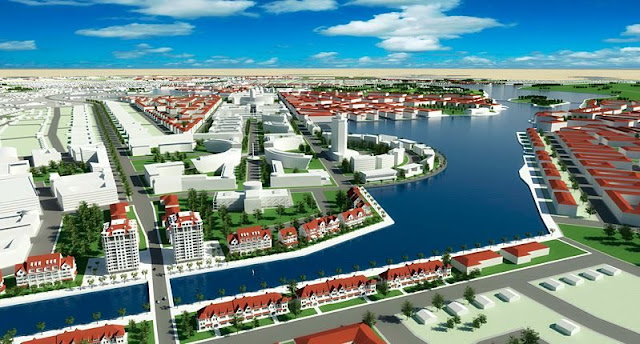Africa will triple its urban population 500 million to 1.5 billion in 2050 will need China to help avoid mass slumification
by noreply@blogger.com (brian wang) from NextBigFuture.com on (#2GZVV)
The proportion of Africans living in urban areas soared from 15 percent in 1960 to 40 percent in 2010. It's projected to hit 60 percent in 2050. Against that backdrop, the big challenge for government policymakers is how to harness urbanization for sustainable and inclusive growth.
"There is a high rate of rural-urban migration, and an increasing number of slums and squatter settlements in urban areas across Africa," Obitou says. "This kind of migration has brought shortages of adequate housing, basic infrastructure and services - in addition To contribute to overcrowding and congestion, and increasing exposure to environmental hazards. However, with proper planning, we will be able to manage our urbanization process.
Africa will go from 1.2 billion people today to about 2.5 billion in 2050.
The urban population will go from about 500 million today to 1.5 billion in 2050.
China, during its rapid urbanization, was able to successfully controlled the number of slums, for example.
In most of the African countries, extreme poverty is more prominent in rural areas than in urban centers; hence, urbanization seems to be an effective method for providing better services and livelihoods to millions of Africans - as abrations in China - he says.
According to the world Bank, a cornerstone of China's urbanization strategy has been the hukou or household registration system to control migration, and trying to channel migrants to small medium-sized cities.
Another key element is the devolution of public services and many administration functions to city governments. In 2005, Chinese citizens' degree of satisfaction with local governments rose to 72 percent - surplus higher than in many other countries, including the United States.
China can help Africa to strengthen its city management and planning, so that cities do a better job of looking ahead and improved congestion, pollution and the emergence of urban slums.
China will also likely expand its funding and construction of infrastructure and large scale construction processes in Africa.

Across Africa, Chinese companies are building highways, railways, sports stadiums, mass housing complexes, and sometimes entire cities.
But China isn't just providing the manpower to fuel quickly urbanizing African cities. It is exporting its own version of urbanization, creating cities and economic zones that look remarkably similar to Chinese ones.
Since 2005, Chinese businesses have invested an estimated $120 billion in sub-Saharan Africa . And don't expect China's focus on Africa to decrease over the next decade.
According to South China Morning Post, China's central government and state-owned banks will help finance $1 trillion in projects in Africa through 2025 -- 70-80 percent of which will come from the Export-Import Bank of China -- with a specific focus on infrastructure projects.
Read more










"There is a high rate of rural-urban migration, and an increasing number of slums and squatter settlements in urban areas across Africa," Obitou says. "This kind of migration has brought shortages of adequate housing, basic infrastructure and services - in addition To contribute to overcrowding and congestion, and increasing exposure to environmental hazards. However, with proper planning, we will be able to manage our urbanization process.
Africa will go from 1.2 billion people today to about 2.5 billion in 2050.
The urban population will go from about 500 million today to 1.5 billion in 2050.
China, during its rapid urbanization, was able to successfully controlled the number of slums, for example.
In most of the African countries, extreme poverty is more prominent in rural areas than in urban centers; hence, urbanization seems to be an effective method for providing better services and livelihoods to millions of Africans - as abrations in China - he says.
According to the world Bank, a cornerstone of China's urbanization strategy has been the hukou or household registration system to control migration, and trying to channel migrants to small medium-sized cities.
Another key element is the devolution of public services and many administration functions to city governments. In 2005, Chinese citizens' degree of satisfaction with local governments rose to 72 percent - surplus higher than in many other countries, including the United States.
China can help Africa to strengthen its city management and planning, so that cities do a better job of looking ahead and improved congestion, pollution and the emergence of urban slums.
China will also likely expand its funding and construction of infrastructure and large scale construction processes in Africa.
Across Africa, Chinese companies are building highways, railways, sports stadiums, mass housing complexes, and sometimes entire cities.
But China isn't just providing the manpower to fuel quickly urbanizing African cities. It is exporting its own version of urbanization, creating cities and economic zones that look remarkably similar to Chinese ones.
Since 2005, Chinese businesses have invested an estimated $120 billion in sub-Saharan Africa . And don't expect China's focus on Africa to decrease over the next decade.
According to South China Morning Post, China's central government and state-owned banks will help finance $1 trillion in projects in Africa through 2025 -- 70-80 percent of which will come from the Export-Import Bank of China -- with a specific focus on infrastructure projects.
Read more